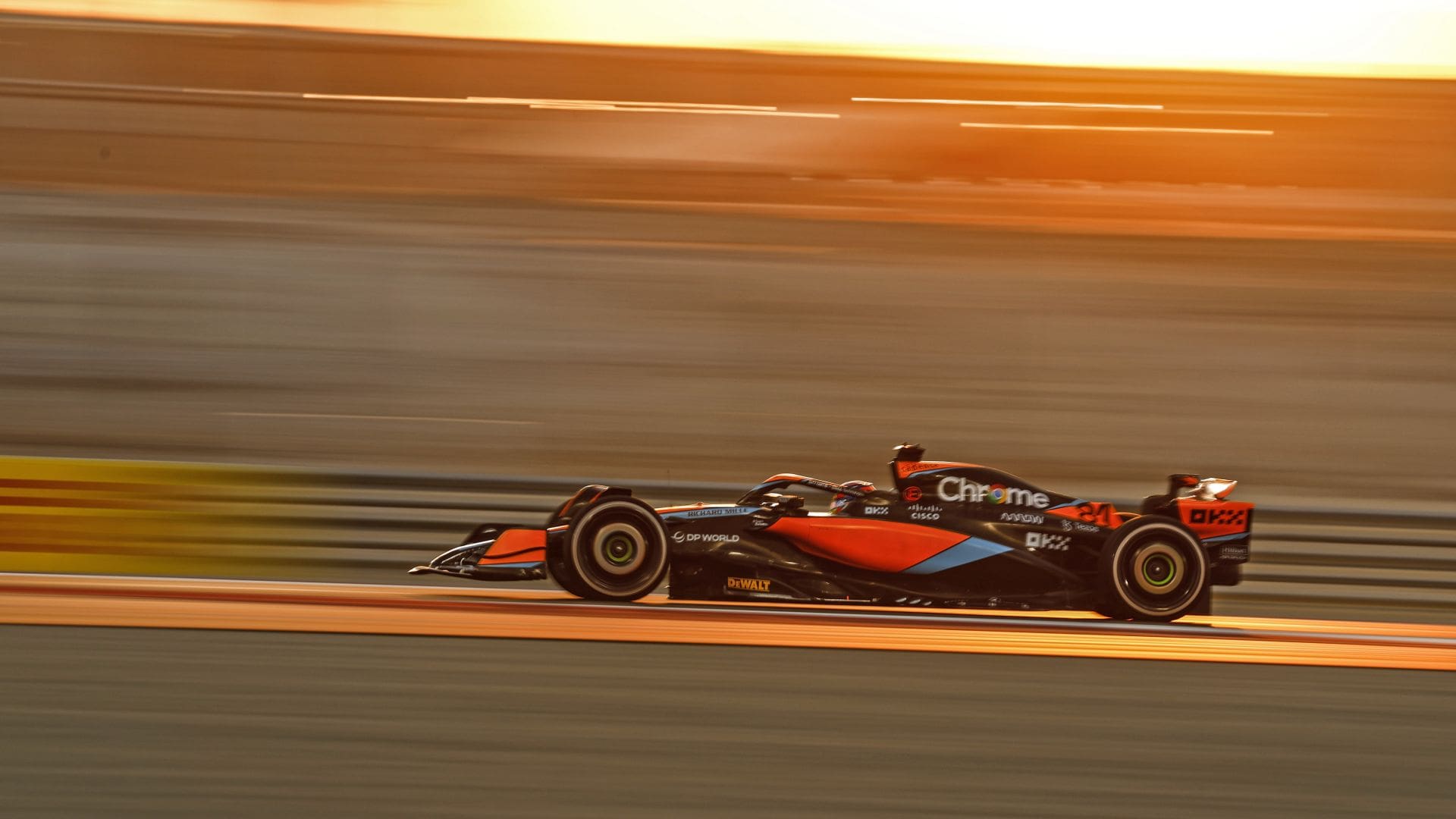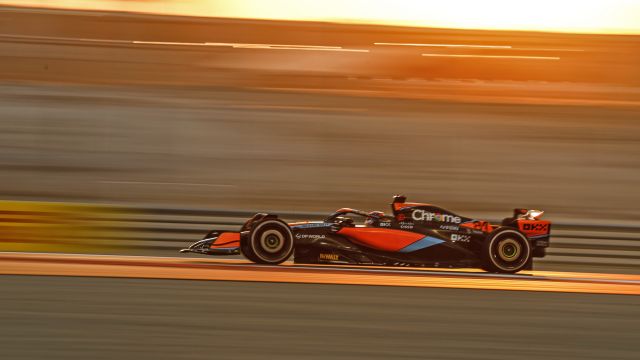Formula 1 Aerodynamics: Exploring Advanced Racing Technologies


Formula 1 aerodynamics plays a crucial role in the performance and handling of these high-speed racing machines. The intricate designs of F1 cars strive to achieve the perfect balance between downforce, which keeps the car glued to the track, and minimal air resistance, known as drag. As a result, aerodynamics has become a fundamental aspect of F1 car development, driving engineers to come up with innovative design solutions to enhance performance.
In the world of F1, car designers face numerous challenges concerning aerodynamics. Every little detail counts, as even minor alterations in the bodywork or wings can have a significant impact on the car’s behavior. Teams must ensure their cars comply with a strict set of aerodynamic regulations while simultaneously optimizing the car’s shape for maximum performance. This delicate balancing act is what makes Formula 1 aerodynamics such a fascinating and crucial aspect of the sport.
Key Takeaways
- Precision Engineering for Peak Performance: The intricate aerodynamic design of Formula 1 cars is a testament to the precision engineering required to balance downforce and drag. This balance is critical for achieving high speeds while maintaining the necessary grip and stability on the track.
- Aerodynamics as a Competitive Edge: With regulations limiting engine power and other performance factors, aerodynamics has become the battleground for teams seeking a competitive edge. Innovations in car design that enhance aerodynamic efficiency can lead to significant gains in race performance.
- Regulations Driving Innovation: The strict aerodynamic regulations set by the FIA spur continuous innovation in F1 car design. Teams are challenged to find creative solutions within the regulatory framework, which often leads to advancements in automotive aerodynamics that can trickle down to consumer vehicles.
Fundamentals of Aerodynamics
Fluid Dynamics
Aerodynamics is essentially the application of classical theories of fluid mechanics, which include both liquids and gasses, to external flows or flows around bodies in Formula 1 racing. Some general properties of fluid dynamics include air pressure, air density, and gravitational constant, among others – source. These properties play a significant role in understanding the forces acting upon a Formula 1 car and how to optimize its performance.
Air Velocity
Air velocity is an essential factor in Formula 1 aerodynamics. It refers to the speed of the car relative to the air around it, and it affects various aspects of the vehicle, such as lift and drag forces – source. By manipulating air velocity around the car, engineers and designers aim to reduce drag, increase downforce, and ultimately enhance the car’s overall performance.
Role of Aerodynamics in Formula 1
Downforce and Ground Effect
In Formula 1 racing, aerodynamics play a crucial role in enhancing the performance and stability of the cars. Downforce refers to the vertical force applied on the car by the air flowing over and around it. Higher downforce levels increase the grip between the tires and the road, allowing cars to corner at higher speeds without losing control. In F1, most of the downforce is generated by the front and rear wings, as well as the underbody ground effect.
The ground effect, a phenomenon caused by low-pressure air below the car, effectively “sucks” the car down to the road. This dramatically increases the downforce and can be achieved by strategically designing the car’s underbody and side skirts. Ground effect was more prominent in the past, but due to safety concerns, its usage has been regulated in modern F1 cars.
Aerodynamic Balance and Airflow
Achieving an optimal aerodynamic balance is crucial for the overall performance of a Formula 1 car. Teams must find the right balance between downforce and drag, ensuring that the car has sufficient grip without compromising speed. This is achieved by fine-tuning the shape and angle of various aerodynamic components, such as the front wing, rear wing, and sidepods.
Airflow management around and through the car is essential for generating downforce and minimizing drag. Engineers use techniques such as Computational Fluid Dynamics (CFD) simulations and wind tunnel testing to study and optimize the flow of air around the car. This helps them design more efficient aerodynamic components and better understand how changes to one part of the car can impact the overall aerodynamic balance.
Vortices and Wake
During a race, F1 cars generate vortices – swirling patterns of air that can have both positive and negative effects on performance. Vortices can be used to enhance downforce and control airflow around the car, but they can also be the source of increased drag and turbulence. The wake generated by a car, or the disturbed airflow behind it, can negatively impact the performance of a trailing car, which is forced to drive through the turbulent air.
In recent years, the FIA has introduced regulations to address the increasing problems with the wake created by F1 cars. The goal is to develop cars that are less sensitive to wake turbulence and generate less turbulence themselves, making it possible for drivers to follow closely and attempt overtaking maneuvers without compromising their performance.
Formula 1 Car Design and Aerodynamics
Front and Rear Wings
In Formula 1 car design, front wings and rear wings play a crucial role in controlling aerodynamics. The front wing guides air around the car and creates downforce, enhancing grip and stability. Similarly, the rear wing contributes to downforce generation and provides balance by ensuring that the back of the car remains stable at high speeds. These components are carefully designed and often adjusted to optimize performance according to specific track conditions and driver preferences.
Underfloor and Diffuser
The underfloor and diffuser sections of an F1 car are responsible for generating significant amounts of downforce without adding much drag. The underfloor creates a low-pressure area under the car, pulling it towards the ground, while the diffuser accelerates the air exiting from beneath and reduces turbulence. Together, these components work to improve the car’s overall performance and stability, especially in corners where grip is essential.
Bargeboards and Brake Ducts
Bargeboards and brake ducts are additional aerodynamic elements found on F1 cars. Bargeboards, located between the front wheels and side pods, help manage airflow around the car. They direct air towards the side pods for efficient cooling and reduce turbulence generated by front wheels. Brake ducts, on the other hand, contribute to car aerodynamics while serving the primary function of cooling the brake system during high-speed racing. They channel air around and through the braking components, ensuring effective heat dissipation, which ultimately results in better braking performance and reliability.
The combination of these advanced aerodynamic features, including front and rear wings, underfloor and diffuser, as well as bargeboards and brake ducts, work together to maximize an F1 car’s potential on the track. Each element is fine-tuned and adjusted to strike the perfect balance between downforce, drag, and stability for optimum performance.
Aerodynamics Regulations in Formula 1
Formula 1 aerodynamics play a crucial role in the performance and competitiveness of the racing cars. The sport’s governing body, the Fédération Internationale de l’Automobile (FIA), establishes guidelines and regulations to ensure fairness and safety within the competition.
Technical Regulations
The FIA’s technical regulations specifically address various aspects of car design and performance, including aerodynamics. These rules aim to strike a balance between allowing teams to innovate and pursue performance gains and ensuring a fair and safe competition on the track.
In 2022, a significant aerodynamic regulation change marked a shift in Formula 1 car design. The objective was to make the cars behave differently than before, with the goal of producing closer racing, more opportunities to overtake, and a wider range of strategies for the teams.
An aspect of these regulations is the restriction of aerodynamic development. Previously, teams could run their wind tunnels at will, leading to a disparity in resources and advantages among competitors. The current aerodynamic regulations impose limits on wind tunnel usage, fostering a more level playing field.
Another key aspect in the 2022 regulations focuses on the cars’ floors, which were modified to reduce downforce levels. These changes aimed at making the racing more competitive and allowing for even closer contests between teams by minimizing the aerodynamic advantage brought by specific car designs.
Impact of Aerodynamics on Race Performance
Aerodynamics plays a critical role in Formula 1 racing, as it significantly influences the performance of the cars. This section will discuss the impact of aerodynamics on cornering speed and tyres, as well as the use of simulation and analysis tools in enhancing race performance.
Cornering Speed and Tyres
In Formula 1, the cornering speed of a car depends heavily on its aerodynamic design. Aerodynamics increases cornering and braking accelerations, which directly affect the cornering speeds of F1 cars. A well-designed aerodynamic system can improve grip and provide stability during high-speed turns on the track.
Tyres also play a significant role in race performance. The grip generated from the tyres is vital for maintaining speed and control on corners. Aerodynamics can help optimize tyre performance by creating downforce that pushes the car onto the track, leading to better tyre adhesion and improved cornering speed. Additionally, effective aerodynamic design can help manage tyre temperatures, ensuring optimal working conditions and prolonging the life of the tyres.
Simulation and Analysis
Simulation and analysis tools are of great importance in the development of F1 cars’ aerodynamic performance, as they allow engineers to test and optimize various designs before implementing them on the actual vehicle. These tools help in understanding the complex airflow patterns around the car and calculating the performance parameters such as downforce, lift, and drag.
Using Computational Fluid Dynamics (CFD) simulations, engineers can analyze the airflow around the car’s body, wings, and other components, and iterate on their designs to achieve better performance. Moreover, wind tunnel testing is another technique used to validate the CFD results and fine-tune the car’s aerodynamics.
You may also like…

Formula 1 Aerodynamics – Parts Summary
Here’s are the aerodynamic parts of a Formula 1 car and their respective functions:
| Aerodynamic Part | Description |
|---|---|
| Front Wing | The front wing is designed to control the flow of air over and around the car. It helps in directing air around the tires and onto the side pods. It also generates downforce, which pushes the car onto the track to improve grip. |
| Rear Wing | The rear wing generates downforce at the back of the car, balancing the effects of the front wing. It also has a movable section called the DRS (Drag Reduction System) which, when activated, reduces drag and increases straight-line speed. |
| Diffuser | Located at the rear underside of the car, the diffuser accelerates the airflow underneath the car, creating a low-pressure area. This generates significant downforce and enhances the car’s grip on the track. |
| Bargeboards | These are located between the front wheels and the side pods. Bargeboards manage the turbulent air coming off the front tires and guide it smoothly around the side pods, optimizing airflow to the rear of the car. |
| Side Pods | Side pods house the radiators and cooling systems. Their shape is crucial for managing airflow around the middle and rear of the car, ensuring optimal cooling and aerodynamic efficiency. |
| Turning Vanes | These are small, vertical aerodynamic devices usually located under the car’s nose or around the side pods. They help in directing and managing airflow around the car, improving overall aerodynamic efficiency. |
| Floor | The car’s floor, especially its edges, is designed to manage the airflow underneath the car. It works in conjunction with the diffuser to generate downforce. |
| T-Wing | A smaller wing located just ahead of the rear wing. It helps in managing airflow over the rear wing, optimizing its performance and increasing downforce. |
| Halo | While primarily a safety device, the halo also has aerodynamic implications. Teams design the halo fairing to minimize aerodynamic disruption and manage airflow around the cockpit. |
| Brake Ducts | These are openings in the wheel hubs that direct air to the brakes for cooling. Their design also influences the aerodynamics around the tires, managing turbulence and improving airflow. |
This table provides a basic understanding of the aerodynamic components of a Formula 1 car. Each team may have specific designs and innovations that further enhance the aerodynamic performance of their cars.
Formula 1 Aerodynamics – Frequently Asked Questions
Can Formula 1 cars fly?
No, Formula 1 cars are designed to stay on the ground. Although they generate significant aerodynamic downforce to keep them pressed to the track for better grip and cornering speeds, they are not designed to take off and fly like an aircraft. The aerodynamics of an F1 car are engineered to manage airflow over and under the car to prevent lift, which is the force that would cause an airplane to ascend. However, under certain conditions, such as a sudden change in angle or when a car collides with another object, an F1 car can momentarily become airborne. This is a highly dangerous situation and is not a part of the car’s normal operation. The physics behind F1 cars going airborne involves a complex interplay of aerodynamics, much like the way that aircraft generate lift, but in the case of F1 cars, the effect is unintended and undesired.
Watch: Can Formula 1 cars fly?
How do F1 cars utilize aerodynamics to enhance grip?
F1 cars are shaped to take advantage of the aerodynamics properties to enhance grip and raise performance. Through expert manipulation of airflow, the car generates more downforce, which increases the grip between the tires and track surface. This ultimately allows the car to have better handling and faster cornering speeds.
What are the key aerodynamic components of an F1 car?
Key aerodynamic components on an F1 car include the front and rear wings, diffuser, bargeboards, and various small winglets attached to the bodywork. Each component plays a unique role in guiding the airflow around the car, serving to increase performance and stability. These components are continuously tested and refined to optimize efficiency and performance.
What is the role of a Formula 1 aerodynamics engineer?
A Formula 1 aerodynamics engineer is responsible for designing, optimizing, and testing the aerodynamic features of the car. They use a combination of computational fluid dynamics (CFD), wind tunnel testing, and real-world testing to analyze and improve airflow over the car’s surfaces to maximize downforce while minimizing drag. They work closely with the design team to create a car that performs well on both straights and corners.
How do modern F1 front wing designs affect aerodynamics?
Modern F1 front wing designs are complex and feature multiple elements for controlling airflow around the car. These designs help improve aerodynamics by directing air more efficiently around the car, increasing downforce on the front tires, and reducing overall drag. Additionally, they play a role in managing the wake created by the car, thereby reducing the impact of turbulence on following cars.
What are common simulations used to test F1 car aerodynamics?
Common simulations used to test F1 car aerodynamics include computational fluid dynamics (CFD) and wind tunnel testing. CFD uses mathematical models and computer algorithms to simulate airflow around the car, helping engineers understand and optimize its aerodynamic performance. Wind tunnel testing, on the other hand, involves placing a scale model of the car in a controlled environment and measuring the forces generated by the airflow. Both of these methods allow engineers to analyze and refine various aspects of the car’s aerodynamics for peak performance.
Do F1 cars have active aerodynamics?
No, currently Formula 1 cars do not use active aerodynamics in the sense of movable aerodynamic devices that adjust in real-time to the car’s speed or the driver’s inputs. Active aerodynamics are systems that can change their configuration during the course of a lap to optimize performance, such as altering wing angles or other body parts to reduce drag on straights or increase downforce in corners. These systems are banned in F1 to prevent excessive development costs and to maintain a level playing field among teams. However, the Drag Reduction System (DRS) is an exception that allows a driver to adjust the angle of the rear wing to reduce drag and facilitate overtaking in designated zones.
How much do F1 aerodynamicists make?
The salary of Formula 1 aerodynamicists can vary widely depending on their experience, the team they work for, and their specific role within the team. According to various sources, the average salary for an F1 aerodynamicist ranges from £40,000 to £60,000 per year. Junior aerodynamicists or recent graduates may start at a lower end of the salary scale, while senior aerodynamicists with significant experience and a track record of success in the industry can earn much higher salaries. At the top teams, where the budget allows for more competitive salaries, an experienced aerodynamicist could potentially earn upwards of £450,000 per year.





